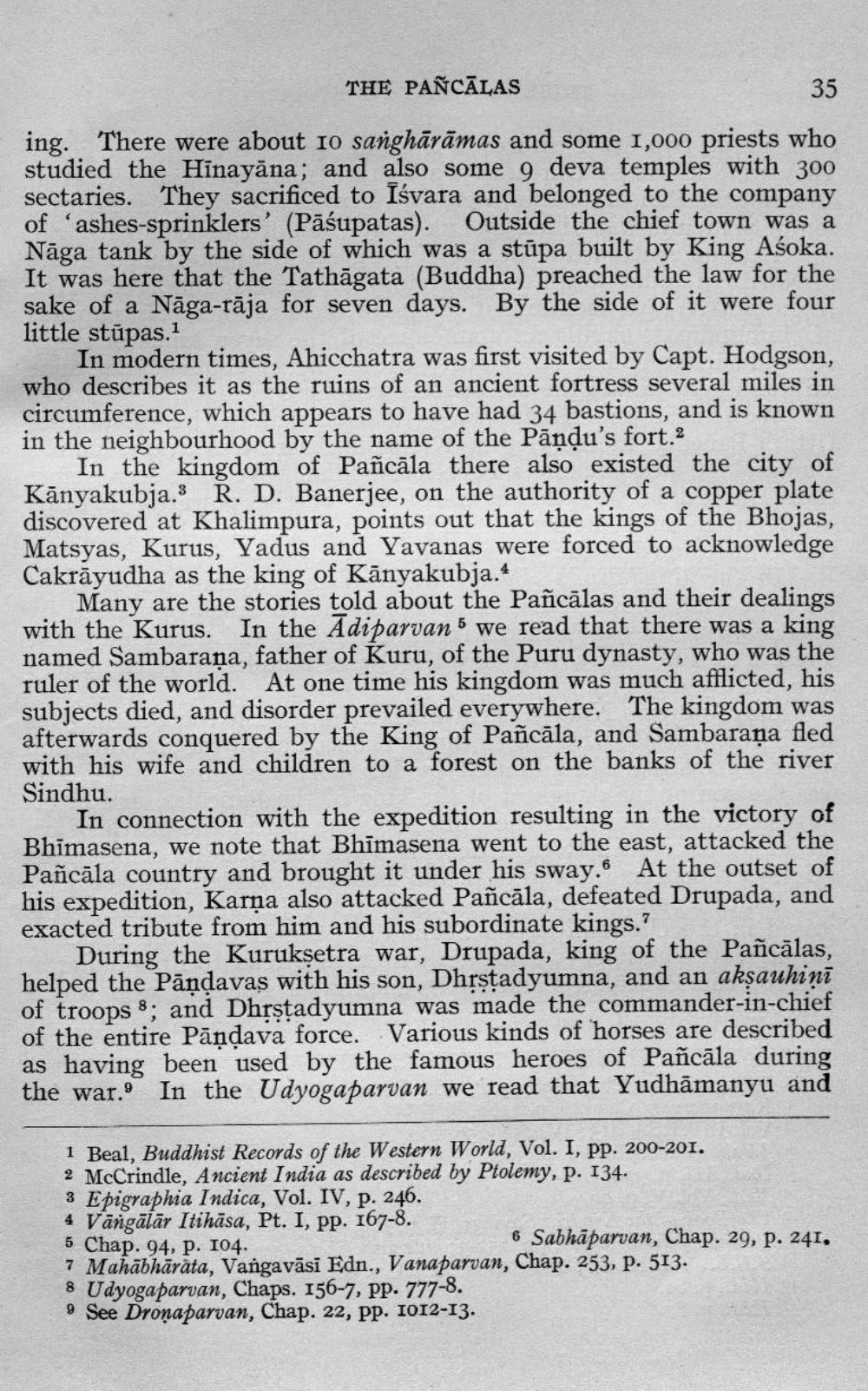________________
THE PANCALAS
35
ing. There were about 10 sangharāmas and some 1,000 priests who studied the Hinayana; and also some 9 deva temples with 300 sectaries. They sacrificed to Isvara and belonged to the company of ashes-sprinklers' (Pasupatas). Outside the chief town was a Naga tank by the side of which was a stupa built by King Aśoka. It was here that the Tathāgata (Buddha) preached the law for the sake of a Naga-raja for seven days. By the side of it were four little stūpas.1
In modern times, Ahicchatra was first visited by Capt. Hodgson, who describes it as the ruins of an ancient fortress several miles in circumference, which appears to have had 34 bastions, and is known in the neighbourhood by the name of the Pandu's fort.2
In the kingdom of Pañcala there also existed the city of Kanyakubja. R. D. Banerjee, on the authority of a copper plate discovered at Khalimpura, points out that the kings of the Bhojas, Matsyas, Kurus, Yadus and Yavanas were forced to acknowledge Cakrayudha as the king of Kanyakubja.*
Many are the stories told about the Pañcālas and their dealings with the Kurus. In the Adiparvan 5 we read that there was a king named Sambarana, father of Kuru, of the Puru dynasty, who was the ruler of the world. At one time his kingdom was much afflicted, his subjects died, and disorder prevailed everywhere. The kingdom was afterwards conquered by the King of Pañcala, and Sambaraṇa fled with his wife and children to a forest on the banks of the river Sindhu.
In connection with the expedition resulting in the victory of Bhimasena, we note that Bhimasena went to the east, attacked the Pañcala country and brought it under his sway. At the outset of his expedition, Karna also attacked Pañcala, defeated Drupada, and exacted tribute from him and his subordinate kings."
During the Kurukṣetra war, Drupada, king of the Pañcālas, helped the Pandavas with his son, Dhrstadyumna, and an akṣauhini of troops; and Dhrstadyumna was made the commander-in-chief of the entire Pandava force. Various kinds of horses are described as having been used by the famous heroes of Pañcala during the war. In the Udyogaparvan we read that Yudhamanyu and
1 Beal, Buddhist Records of the Western World, Vol. I, pp. 200-201.
2 McCrindle, Ancient India as described by Ptolemy, p. 134.
3 Epigraphia Indica, Vol. IV, p. 246.
4 Vangalar Itihasa, Pt. I, pp. 167-8.
5 Chap. 94, p. 104.
6 Sabhaparvan, Chap. 29, p. 241.
7 Mahabharata, Vangaväsi Edn., Vanaparvan, Chap. 253, p. 513.
8 Udyogaparvan, Chaps. 156-7, pp. 777-8.
9 See Dronaparvan, Chap. 22, pp. 1012-13.




